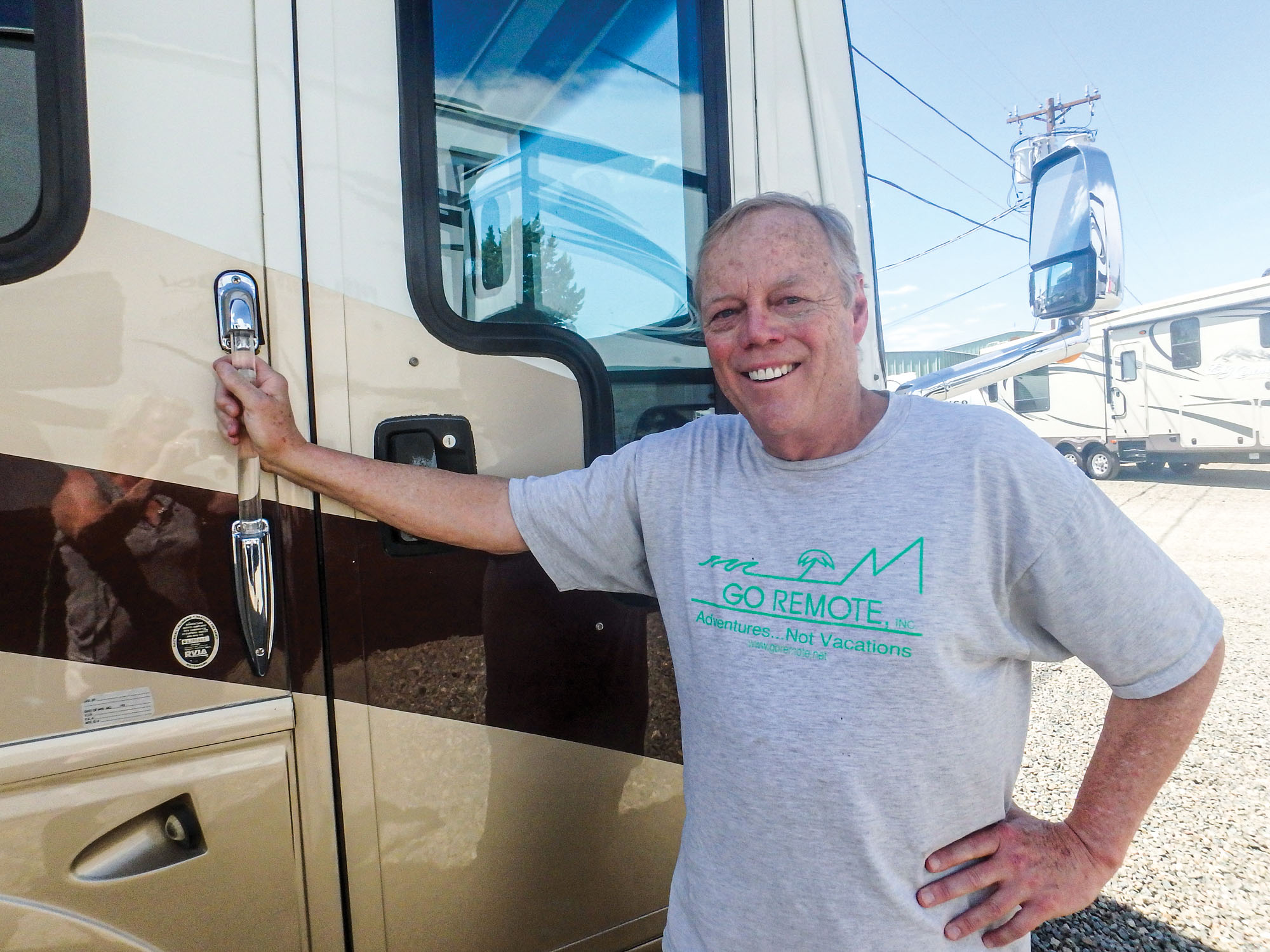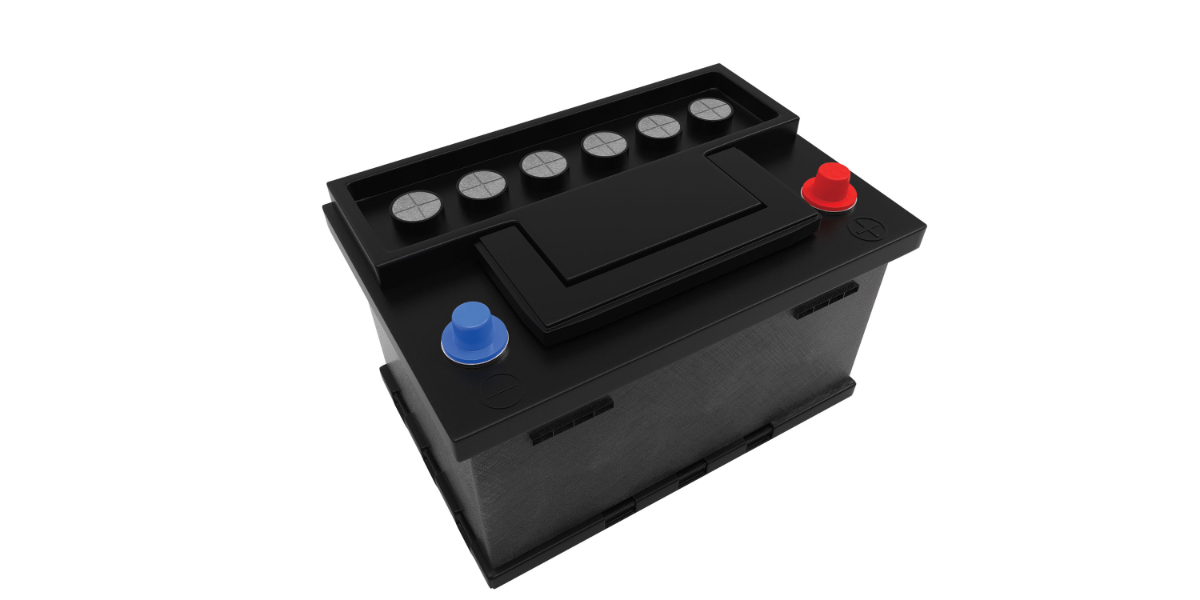Tech Q&A – April 2022
Charging Electric Cars at a Campsite, a Generator That Doesn't, a Fridge That Runs Too Cold, and Propane Container 101
Image Caption:
Propane Container Recertification
Q: I was just made aware that propane containers are dated and must be recertified. Neither my husband nor I were aware of this. What happens if they aren’t recertified? Could you possibly get a ticket for this? Could you please publish something about this for all the readers? My understanding is that motorhomes have different rules.
Denise Knowles, via email
A: There are two types of RV propane containers used in RVs: the American Society of Mechanical Engineers (ASME) tank, which is permanent and used in motorhomes; and the Department of Transportation (DOT) cylinder, which is removable and used in trailers. The ASME motorhome tanks do not require recertification, but they still should be inspected periodically for rust and dents. Propane containers are tough; they’re built to safely contain liquified propane gas under high pressure, while also standing up to rough handling and weather. But the portable cylinders do have an official service life, and as such must be periodically inspected and recertified.
In the USA, a new DOT cylinder is qualified for 12 years from the date of manufacture. In Canada, it’s good for only 10 years. A recertified cylinder is good for 5, 7, or 12 years, depending on the method and type of recertification. The collar or handle area of a portable propane cylinder near the valve is stamped with the date of manufacture. It typically reads in a four-digit month-year format. So, if the cylinder was built in July 2021, it would read “07-21.”
A propane tank’s recertification date usually starts with a letter instead of numbers. The letters A, B, C, and D correspond with a calendar year quarter. The letter “A” would mean the tank was recertified in January, February, or March, followed by the two numbers of the year. A tank stamped “B 21” would indicate the second quarter of 2021. Additional letters indicate the type of recertification, which determines the frequency of follow-up inspections.
Propane sellers are supposed to check the date and not fill expired cylinders. I’ve never heard of someone receiving a ticket for having an out-of-date cylinder, although I guess it’s possible. It’s more likely that the propane seller would receive a summons for filling an expired cylinder.
Take Charge
Q: We have an Airstream Excella 29-foot travel trailer. Reading the “Towing an Electric Car?” letter in the January 2022 issue, I am bothered by your answer that “…campgrounds are not wired to handle the heavy power draws of electric car charging and won’t appreciate you doing so on their electric bill.” This is incorrect, as a happy electric vehicle owner I can tell you precisely that using my NEMA 14-50 plug, it uses only 32 amps of power to charge, and a full charge would be less than $10 of electricity.
Not only are electric vehicles configured to charge using any power available, but they also incorporate smart controllers to limit the amperage based on the tested draw (safety) or user selection. An RV with two air conditioners running would use more power than my car would.
I believe campgrounds may turn their nose up at the idea of someone charging up, but they should be more concerned about the double air conditioner thermostat set to 60° F in an RV than the EV. Furthermore, other than a dedicated supercharger location (240–480 voltage), a campground is actually the most equipped to charge EVs, and this could in fact be a business opportunity for some well-located ones to expand upon. I look forward to the day when I see a plug-in hybrid class C or A or even full electric.
Jacob Marsh, Lexington Park, Maryland
A: The subject of electric vehicles is rapidly evolving, and I suspect will continue to do so for the foreseeable future. Opinions also vary considerably on subjects such as the ability of the power grid to handle such future increased loads, who should pay for it, and sources of power for recharging, such as coal, natural gas, nuclear, wind, and solar.
All the Airstream Excellas I’ve seen have at least one rooftop air conditioner, and some have two. I assume that when you are in a campground you will not only plug your electric vehicle into campground-supplied power but will also be using that power to run your RV—making you one of the highest power users in the campground.
You may not have noticed it, but many campgrounds already suffer from low voltage during periods of heavy electrical demand. This causes electric motors such as those in air conditioners to overheat, and demand even more amperage, creating a sort of snowball effect. The 32 amps you mention just for your car is more power than an entire RV that’s using a 30-amp power cord draws at peak load.
Upgrading a campground grid to handle widespread charging of electric vehicles would be very costly, in the many thousands of dollars, especially in this time of supply shortages, high copper prices, and runaway inflation. The campground is going to have to pass that cost on to customers.
Have you asked your campground hosts if it’s OK to charge your electric vehicle using their grid? Using your figure of $10 for additional electricity use (not including the cost of wiring upgrades), that is a substantial portion of a typical campground fee. Who do you think should pay for that? Should RVers who aren’t charging vehicles share in the cost, or should it be those who benefit from it?
Generator Quit
Q: We have a NuWa HitchHiker Discover America. While dry camping for two days, my Honda Generator EX4500S generated electric to the unit and then quit, but the engine continued to run without output of electric. My assumption was it must be a circuit breaker, but I was informed by Honda it was not. I was informed that due to age, no parts are available. I have a generator with an engine that runs great, but with no electricity being generated. Do you have any answers for me?
Adam DeMello, Greeneville, Tennessee
A: I suggest that you familiarize yourself with your generator. Here is the owner’s manual.
Page 13 shows the AC circuit breaker location. Try resetting it and let me know if that solves the problem. Parts are available if needed. Was the source of your information a local dealer? They may be trying to get you to buy a new generator by telling you misinformation.
Dometic Refrigerator Too Cold
Q: My wife and I have a 31-foot Palomino Puma 31BHSS. The fridge is a Dometic RV (gas and electric), model number DM2652RBX. Electricity is easy to come by where we are currently located; gas is a little more complicated, but available as well. The unit seems to operate more “normally” on gas than it does on electricity, but I can’t say for sure that is the case.
Lately, we have been running the fridge on electricity during the day and shutting down the unit at night. This seems to prevent the freezing issues we were experiencing. We are currently located in cooler, damper weather conditions in Northern California. During the summer months, we generally locate ourselves in warmer, drier climates and haven’t had this experience before. I’m hopeful you have some insights that will take the worry out of our refrigeration system, but still provide nice, cold beer!
Steve Long, Post Falls, Idaho
A: Cold, but unfrozen beer is vital! A likely issue if it’s too cold is a problem with a dislocated or faulty thermistor. This could cause overcooling. Check for that and let me know if this helps. Here is that fridge’s owner’s manual.
Backup Camera Inoperative
Q: We have a 2017 THOR ACE 27-foot Class A motorhome. It has an Axxera (model number AV615BHM), which is a Multimedia DVD receiver with Dual Mirror Technology and Bluetooth featuring a 6.2-inch digital TFT LCD and with a rear-view camera. I need contact information where I can get additional information because I have sent them an email and tried to call with no response. I recently had to replace the motorhome’s chassis battery, and since then there’s been no function from this device.
Richard Slider, Redlands, California
A: Axxera’s customer service number is 866-383-5476, which I called and it went through. In case you can’t resolve the problem, I’ve seen on the THOR online forums that some owners have switched over to Kenwood units such as DDX8905s due to problems with this unit. Vendors such as Amazon and Crutchfield offer a number of reasonably priced options.
Slideout … Doesn’t
Q: We have a Class A motorhome. The leveling jacks work okay, but the slideout room doesn’t. How do you get a hydraulic slideout to work when the switch fails?
Julius Ketsenburg, via email
A: You didn’t mention what model coach or slideout mechanism you have. Many come with manual levers that allow you to move the slide in in an emergency when the power fails. There are many components in slide mechanisms that can fail, such as relays and motors, not just switches. If there is no clicking or noise when the switch is operated, it may be a problem with electrical power not getting to the motor.
Try running the engine to increase the voltage to the slideout. Also, have an assistant try pulling the slide when you are operating the switch to extend it. The switch can be removed to measure the voltage at the terminals; it’s low (nominally 12-volt) voltage so it’s safe. The switch can be temporarily jumpered with wires. If you are not a skilled DIYer, you may want to take it to an RV shop.
Hydraulic Leveler Won’t Retract
Q: We own a 2014 Itasca Sunstar 35F Class A, which we bought new. Previously we had an error indicator issue with the control panel for the Lippert leveling system, and the dealer replaced the pump for us on warranty in 2015. Just recently the rear passenger side leveler won’t retract all the way. This appears to be the farthest ram away from the pump. The pump on this unit is located behind the driver-side front wheel. I have checked for fluid levels and leaks and found good fluid levels and no leaks. Do you have any suggestions on how to rectify this problem?
Jim Lenz, Oconomowoc, Wisconsin
A: There can be a delay in retracting, especially in cold weather when the fluid is thick. However, if one leveler simply won’t retract, there’s definitely a problem. Inspect the shaft when it’s extended for corrosion or damage. Clean it with WD-40 and wipe it off with a clean rag. Check the retraction springs for weakness compared to the others, or damage. You might try swapping the springs with another leg to verify this. Manually release the solenoid valve to see if it will retract. You could swap valves to verify you have a bad one. If none of this helps, you may need to rebuild the sticking leg with a replacement cylinder.
Water Leak Under Toilet
Q: We have a 2017 Winnebago Minnie Winnie 31D motorhome and have been searching high and low to find the source of a water leak. It has a raised toilet and freshwater leaks under the toilet between the bedroom wall (no water on that side) and the base of the toilet. It leaks when connected to city water and when the pump runs while dry camping.
We camped for 10 days last September, connected full hookups, and had no leaks (no pressure gauge). In October while dry camping, water leaked on day two off the pump. In November, we connected to city water (with pressure gauge at 60 psi), and it leaked for two days. Would you suggest we remove the toilet, remove the pedestal molding (assuming that’s where the leak is located), or cut into the wall to expose the water lines to see if the line has cracked? Any help is appreciated.
Doug Razzano, via email
A: I would remove the toilet and remove the pedestal molding first as it’s not as destructive. Don’t cut into the wall unless you really find it necessary. I would try hooking the water line to the toilet while it is detached from the floor and raised up on blocks, then pressurize it to look for leaks. Good luck.
Owner’s Manual Wanted
Q: My husband and I bought a 2005 Condor by R-Vision motorhome. Any idea where we might find an owner’s manual, or any info on it?
Kathie Gaenslen, Willis, Texas
A: The manufacturer of your coach is out of business, unfortunately. It is built on a Ford E-Series cutaway chassis; shop and owner’s manuals for the chassis can be found on Amazon, eBay, and elsewhere. Faxon Auto Literature is another good source.
Manuals for individual components such as the furnace, water heater, refrigerator, A/C, stove and oven, microwave, TV, radio, etc. should be readily available with an online search engine, using the model numbers copied from the items. If you ever meet another owner of your model at a campground or whatever, chat them up about if they have the manuals to copy.
Determining Tongue Weight
Q: I have a question about the answer to “Determining Tongue Weight” in the January issue. The answer says to park the trailer on a truck scale and crank the jack up so the entire tongue weight is on the scale. If you jack up the trailer tongue so that the weight is no longer on the truck hitch, I would think the trailer angle would cause some of its weight to shift to the trailer wheels and give you a low estimate of tongue weight.
I would think you should unhitch the trailer, move the truck off the scale and lower the trailer tongue until it is at the same level as when connected to the truck. That would maintain approximately the same weight on the trailer wheels as when connected to the truck. Wouldn’t that be more accurate?
Mike Cliburn, via email
A: Thanks for writing, Mike. Technically you are right. However, if you jack up the tongue just a small amount, it shouldn’t cause a significant weight shift that would affect the tongue weight reading. It only takes enough lift to clear the hitch ball, only a few inches at most. It depends on how stiff the suspension is on the tow vehicle and trailer, and how much tongue weight and lifting is involved. Next time you measure tongue weight, try both ways and let us know your results.
Slideout Problem
Q: We own a 2009 Cameo by Carriage 37-foot fifth-wheel trailer. It has three slideouts that are RBW model GSO-46391. The kitchen slideout is having problems retracting. It goes out fine but when retracting, the motor/gears make a skipping noise. If someone on the outside pushes while someone operates the retract button, we can get it retracted with the motor.
I am thinking the motor bolts may be loose. Do you have any thoughts on what the problem may be and how to correct it? I do not believe the gears are stripped yet. I recently had to manually crank out the slide-out because it had no power, but I did find the no-power problem and fixed that.
David Weaver, Fredericksburg, Virginia
A: You’ll need to expose the slide mechanism and determine what is wrong. It may be that something is coming loose. RBW has closed down operations and Leisure Coachworks has purchased their old stock of parts. You might be able to get an exploded view of your Cameo’s slide mechanism from them, along with any parts needed.
Have a Question?
Looking for answers on all things RV, including systems, engines, accessories, or construction? Submit it to our expert at [email protected] and it may be selected for publication. You must include your name, city and state, phone number (will not be published), and type and model of your RV.

Ken Freund
A member of the Good Sam family since 1988, Ken Freund has been helping readers better understand their RVs for more than 30 years. Throughout his career, he has been a service manager, technician, shop owner, an ASE Certified Master Technician, an instructor of the California Smog Check Program, and author of Haynes Repair Manuals.





